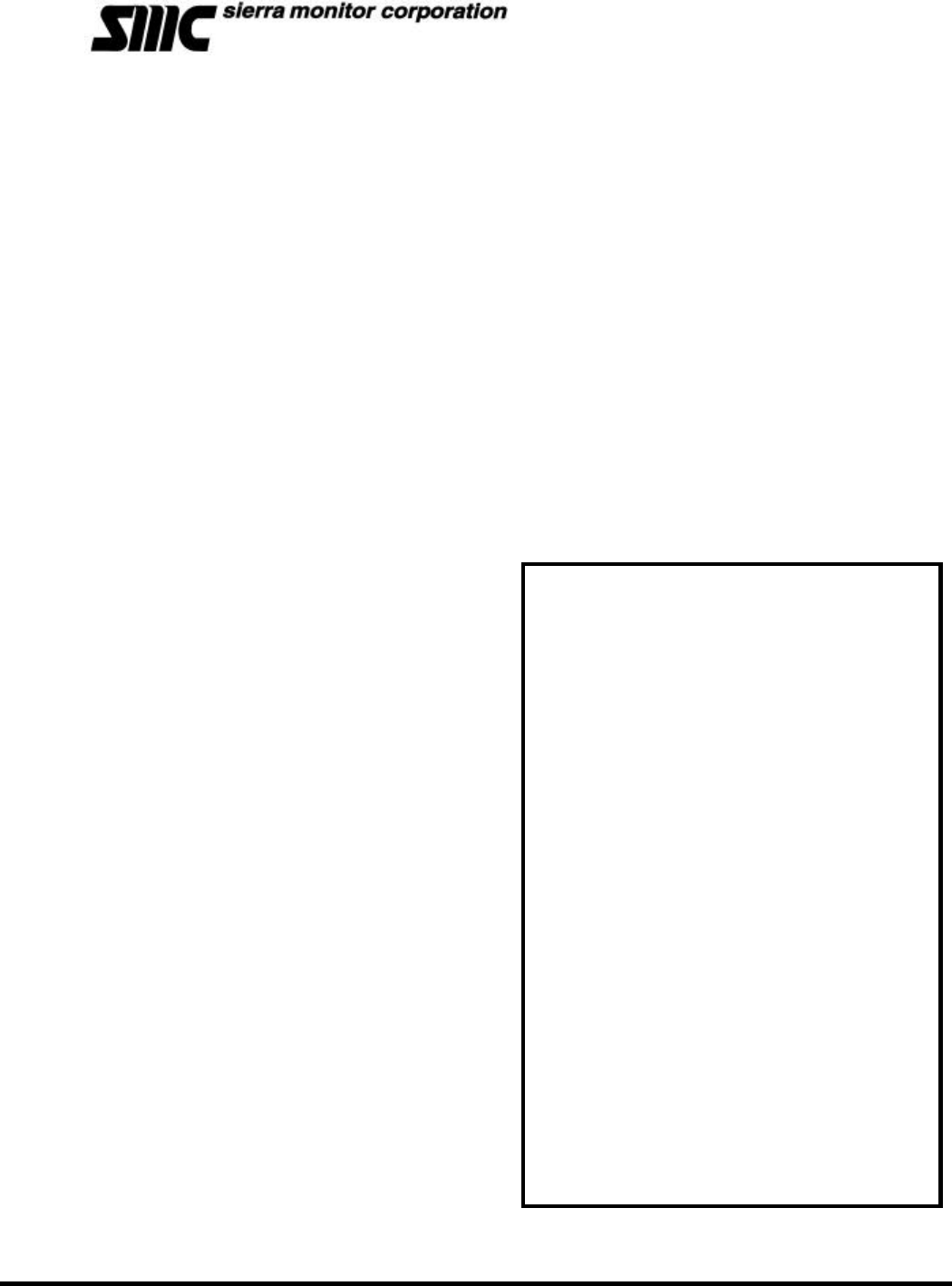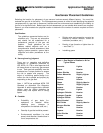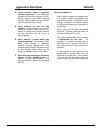
Application Data Sheet
ADS-001
Sierra Monitor Corporation 1991 Tarob Court Milpitas, California 95035 (408) 262-6611 (800) 727-4377 fax: (408) 262-9042
Gas Sensor Placement Guidelines
Selecting the location for placement of gas sensors involves several different factors. You must first
evaluate the gas risk in the facility. The risk assessment process is critical in both identifying the potential
consequences of a gas leak to personnel, facilities and the environment and establishing the liability to
the firm of a significant leak. Based upon the risk assessment you can decide what sensors are required.
Second, you must evaluate the physical location to determine the number of sensors required and their
placement.
Qualification:
The guidelines presented below are for
reference only. They are not exhaustive
and should not be substituted for a
professional analysis of the gas risk
problem. These guidelines do not
address related subjects such as a
comprehensive hazard assessment, data
logging, system operation, system alarm
response and alarm procedures at the
facility.
A. Use engineering judgment
There are no complete and definitive
regulations or guidelines published by
ISA, NFPA, UL, FM or other agencies that
tell users where or how many gas sensors
to use.
1
Each gas leak possibility must be
evaluated as a unique problem to assess
the risk to people and property. The
object of monitoring system design is to
reduce the risk to people and property by
responding to the gas leak.
Note 1: NFPA has published NFPA 73E
Standard on Automatic Fire Detectors,
Appendix A, which suggest that a diffusion
sensor used for smoke detection be
placed every 900 square feet of ceiling
space.
B. Consider
• Probability of gas leaks (i.e.
equipment or material failure,
operating error, changes in
composition of materials used, etc.)
• Quantity of gas that could be present
• Environmental conditions (i.e. wind
speed, wind direction, blowers/fans in
room, temperature, etc.
• Dilution rates and convection currents (as
affected by natural diffusion, forced air
ventilation procedure, etc.)
• Density of gas (heavier or lighter than air
– see Chart 1)
• Interfering gases
Chart 1: Gas Weight in Relation to Air for
Typical Gases
Ammonia Lighter
Butane Heavier
Carbon Dioxide Heavier
Carbon Monoxide Slightly Lighter
Methane Lighter
Chlorine Heavier
Ethane Slightly Heavier
Ethylene Slightly Lighter
Heptane Heavier
Hydrogen Lighter
Hydrogen Chloride Heavier
Hydrogen Cyanide Lighter
Hydrogen Sulfide Heavier
Methyl Alcohol Heavier
Nitric Oxide Slightly Heavier
Nitrogen Dioxide Heavier
Pentane Heavier
Propane Heavier
Sulfur Dioxide Heavier
Toluene Heavier




